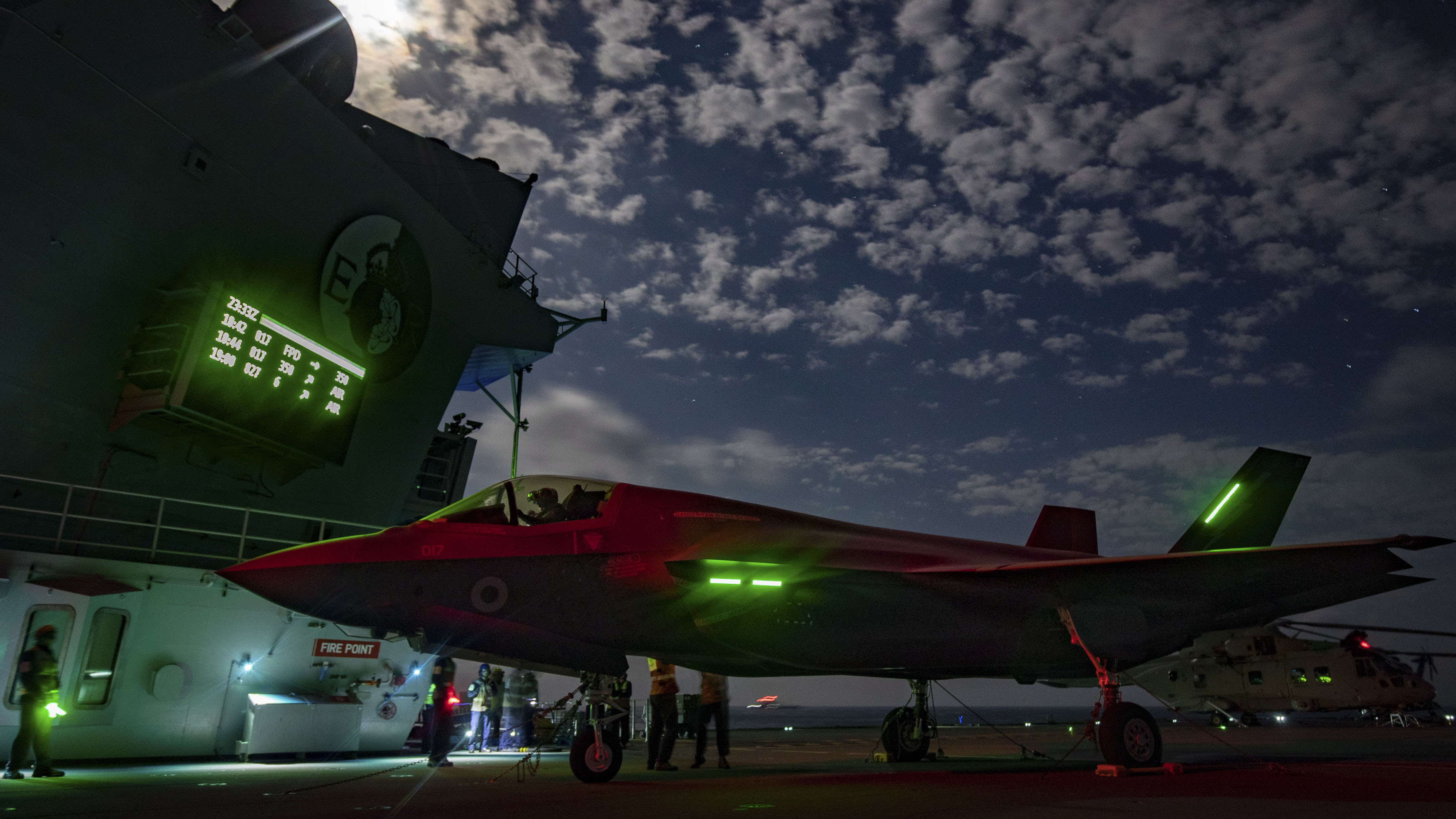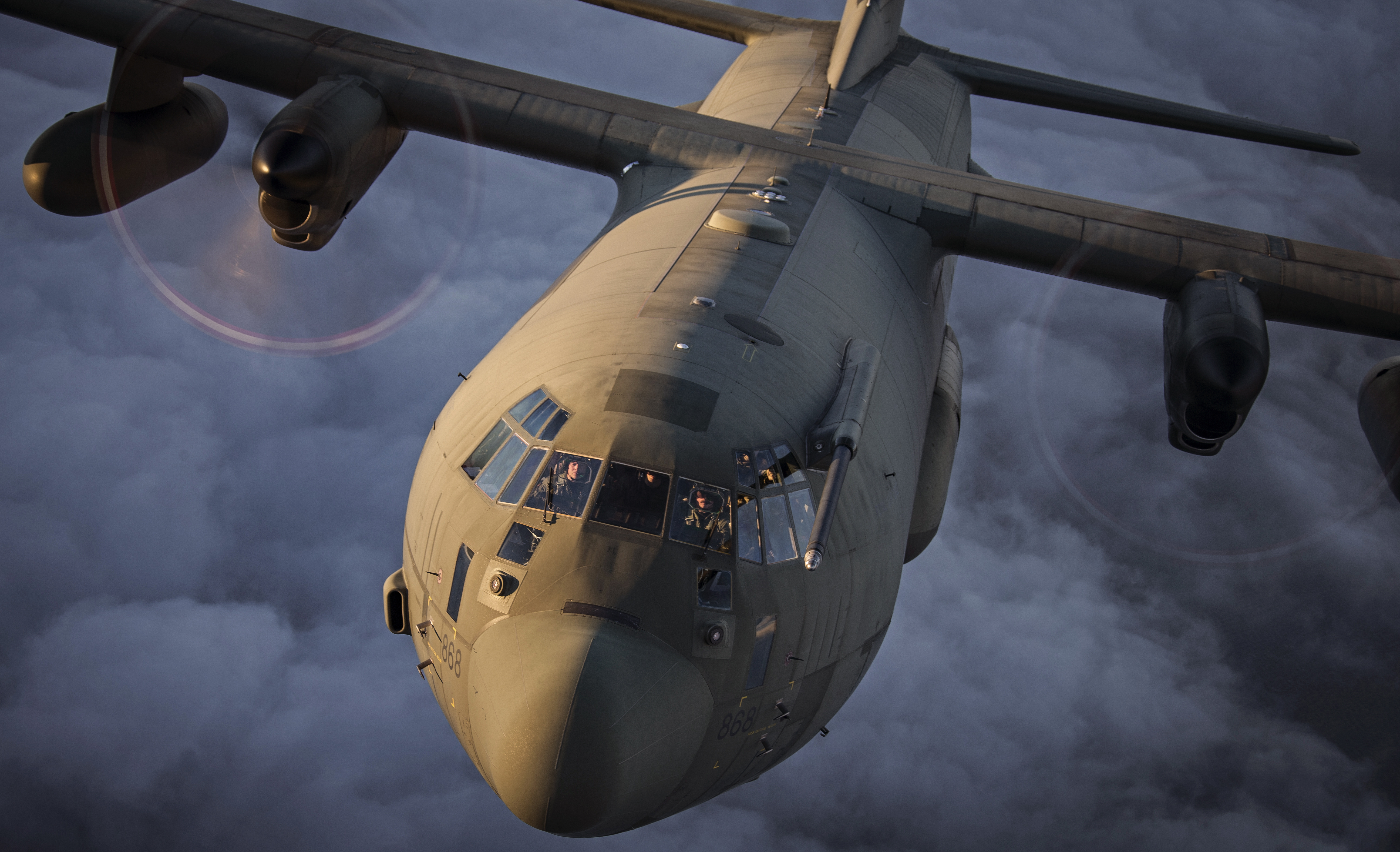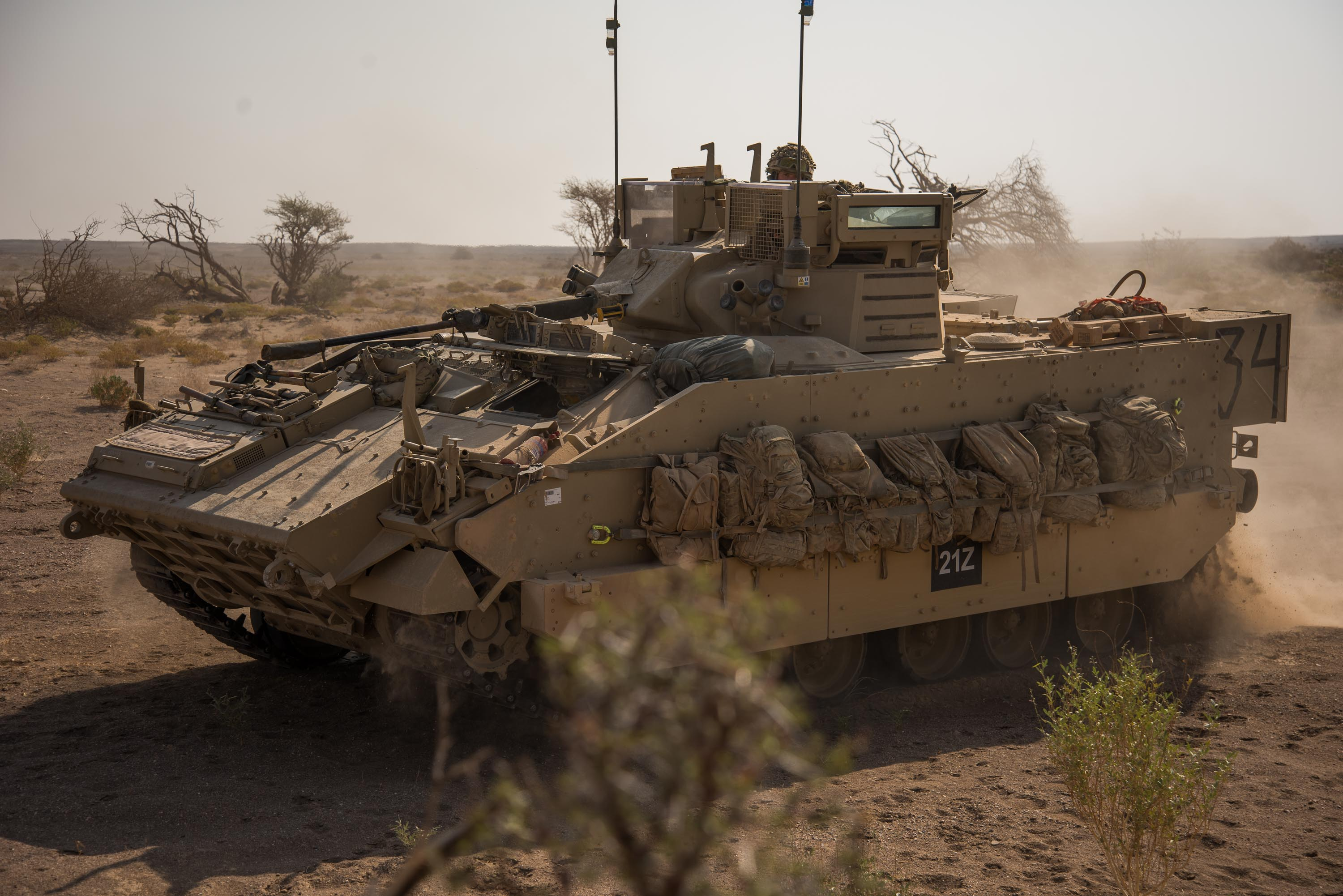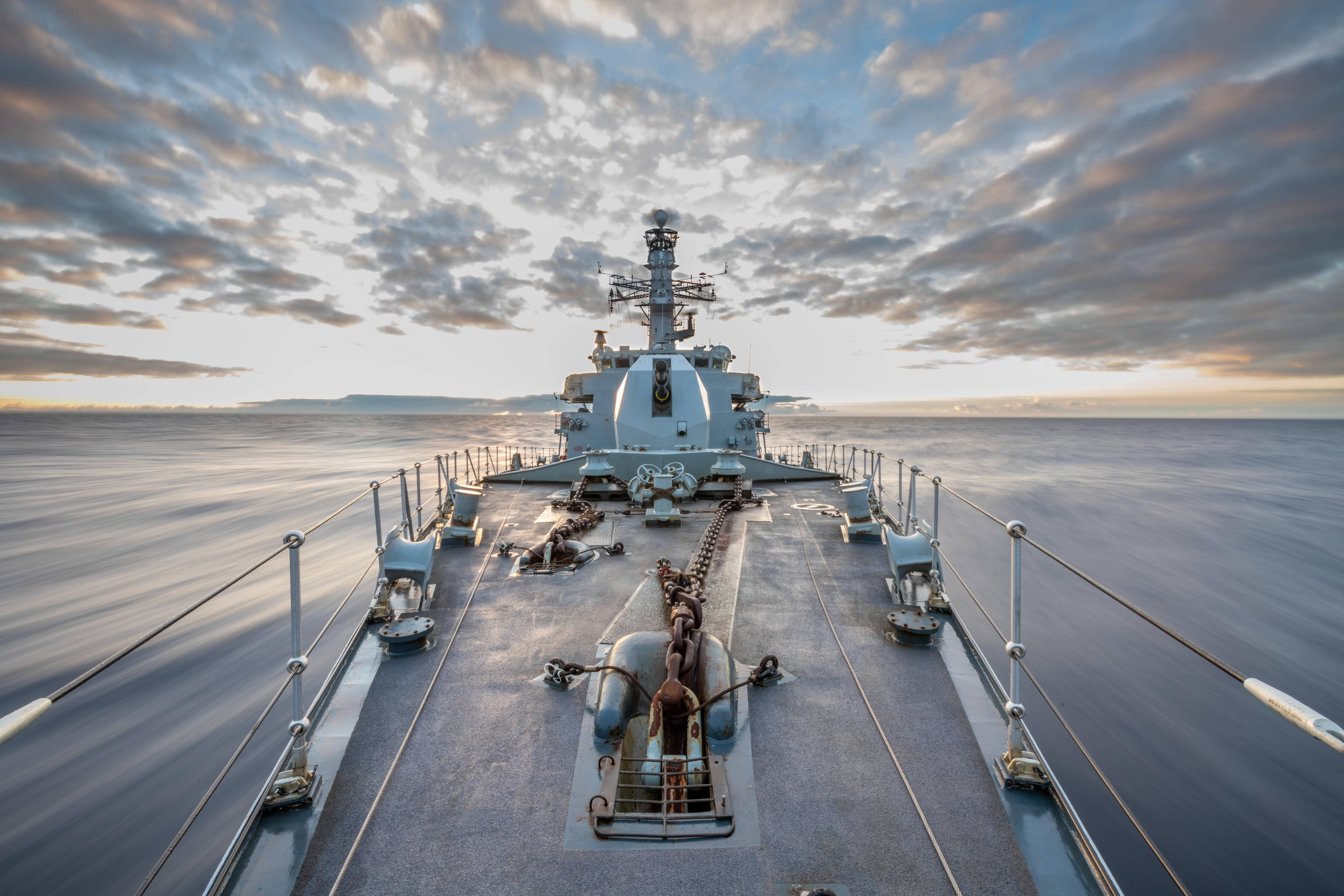As the United Kingdom Armed Forces brace themselves for the government’s next defense review, signs point to significant cuts to the Royal Air Force and the British Army, including a potential reduction of the planned F-35B stealth fighter fleet by around two-thirds. At the same time, the forthcoming document promises to outline a wide-ranging modernization of the armed forces, among them new space and cyber capabilities.
While we don’t know for sure what the review, formally titled Global Britain in a Competitive Age, will contain, a preview was provided in The Times
yesterday, citing sources within the U.K. Prime Minister’s office, commonly referred to as No. 10. The review itself is set to be officially unveiled in two parts beginning on March 16, followed by further details of the defense modernization effort on March 22.

Although a major U.K. defense review normally occurs every five years, the last — the Strategic Defense and Security Review (SDSR) — was in 2015.
According to the report, the document is likely to stress cutting-edge capabilities, including the RAF Space Command, whose first commander was announced last month, as well as a National Cyber Force, plus new artificial intelligence (AI) research facilities. In keeping with the high-tech focus, the prime minister has also recently spoken of both unmanned aircraft and directed-energy weapons as part of the new strategy.
We already know that the defense review will bring a major funding increase for the first time since the end of the Cold War. Last November, Johnson unveiled plans to add almost $22 billion to the defense budget over the next four years. Among flagship projects mentioned by the prime minister at the time were a new class of warships, known as the Type 32, and the continued development of the Tempest stealth fighter. You can read more about the aspirations covered by that promised investment in this previous War Zone story.
However, all this new investment has to be balanced by spending reductions elsewhere in the military and we now have a better understanding of what’s likely to be cut from the armed forces.
Royal Air Force
Long seemingly under threat, it now seems as if the ax will finally drop on the U.K. government’s plans to buy 138 F-35B short takeoff and landing (STOVL) versions of the Joint Strike Fighter. The fledgling F-35 fleet is operated by a joint force of RAF and Royal Navy personnel, but which are based at RAF Marham in Norfolk, England when not embarked aboard one of the two Queen Elizabeth class carriers.
The Times reports that a full 90 aircraft will be cut from the planned F-35B total buy, eventually providing a force of just 48 aircraft. To date, the United Kingdom has committed to buying 48 Lightning jets by the end of 2025, but previously the U.K. Ministry of Defense steadfastly held to the 138-aircraft figure in its communications.
Officials have said that 24 F-35Bs need to be embarked on the ship for a “credible complement” in the core Carrier Strike role. However, a force of 48 would not allow both carriers to sail with the jets simultaneously, once training and maintenance, and not least all the force’s other frontline commitments, are taken into account. In fact, it might not even be sufficient for one carrier.
Speaking to the U.K. Parliament’s Defense Committee last September, Nick Childs, Senior Fellow for Naval Forces and Maritime Security at the International Institute for Strategic Studies, said he considered a number “significantly higher” than 48 F-35Bs would be required to meet the ambition of 24 jets available for Carrier Strike. Taking into account training and other demands, a figure of 60-70 jets would be reasonable, Childs contended.
In the past, there was unofficial speculation that the United Kingdom might opt for a split buy of STOVL F-35Bs and conventional take-off and landing F-35A models. There have been long-standing rumors that this is the long-term option preferred by the RAF, but with a force of just 48 Lightnings, the case for a split buy would become irrelevant.
The Typhoon multirole fighter is also projected to take a hit, with a decision to retire the 24 oldest examples, which are in the basic Tranche 1 configuration. This had also been the plan in the past before the SDSR of 2015 declared that the single-seat Tranche 1 jets would actually be retained for air defense duties as well as specialist aggressor work. These older jets had been expected to be operated until around 2030. Where this new decision, if it comes to pass, leaves the Typhoon’s aggressor role remains unclear.

The savings made on the F-35B and Typhoon should free up funds for the Tempest, although this is still in its very early stages and there are plenty more hurdles to pass before ambitions of putting a new-generation stealthy fighter jet into service by 2035. The question of just how relevant Tempest will be if it even joins the fleet in nearly a decade and a half is also up for debate.
Also requiring funding is the program for a loyal wingman-type unmanned aircraft, which the United Kingdom expects to begin flight testing by 2023. Earlier this year, the RAF announced that Northern Ireland-based Spirit AeroSystems would design and manufacture the prototype “uncrewed fighter aircraft” in its new role at the head of Project Mosquito, an effort to develop drones capable of working together semi-autonomously with manned aircraft, which The War Zone discussed in detail last year.
After the recent standdown of the Sentinel intelligence, surveillance, and reconnaissance (ISR) aircraft, it seems this platform will not be directly replaced, and nor will the smaller Islander and Defender surveillance aircraft, which it seems are also slated to be withdrawn this year. In total, 11 manned ISR aircraft are rumored to be slated for retirement. More cuts are proposed beyond that, too, with the order for E-7 Wedgetail airborne early warning and control (AEW&C) aircraft likely to be reduced from five to just three.
Cuts are expected to be made to the RAF’s transport capacity, too, with the reported loss of all 14 C-130J Hercules transports, which serve primarily in a special forces support role. This will leave the A400M Atlas as the mainstay of the tactical transport role, although there have been concerns these aircraft are not best suited to special forces missions.

The sources also say that the BAe 146 jet transports used, among other things, for transporting key members of the Royal Family will be replaced by leased aircraft. However, the BAe 146s had already been put up for sale, which you can read about here, although they enjoyed a comeback when two examples were adapted for emergency medical transport of COVID-19 patients last year
The RAF’s rotary-wing transport fleet is said to be set for a 41% reduction in numbers, for a total of 45 helicopters to be withdrawn. It’s not clear what these might be, but removal of an entire fleet is a possibility. The obvious candidate would be the Puma HC2, which, although it has been upgraded, dates back to the early 1970s. Twenty-three Pumas currently serve alongside 60 Chinooks, although the oldest of the Chinooks date back to the early 1980s. As recently as last month, the service had revealed it was planning to replace its Pumas with a new type via its New Medium Helicopter (NMH) requirement, although this is still in its very early stages.
There is also the possibility that cuts could be made elsewhere in the rotary-wing fleet, with unconfirmed reports that the British Army may lose its aging Gazelle utility helicopters as part of a planned reduction.
British Army
The British Army is expected to have to make cuts to its personnel strength, traditionally a barometer of overall defense capabilities. The Times says that troop numbers could be cut by 12,500, primarily by reducing recruitment.
This is expected to result in a reduction of 10,000 troops by 2024, with another 2,500 following by 2030. This will bring the overall size of the British army to 70,000, a figure that has been discussed in the past, too. Indeed, in 2015 the ruling Conservative party committed to not reduce the army below 82,000, while this had been dropped two years later. Instead, the 2015 election manifesto stated: “We will maintain the overall size of the armed forces, including an army that is capable of fielding a warfighting division.” In fact, although the army currently has a required size of 82,000, today it’s already below this, at 80,000.
In terms of structure, it’s envisaged that the aforementioned “warfighting division” — one of three such formations in total — will be cut from four to two armored brigades, while 23 battalion-sized units will either be reduced in size or disbanded entirely.

As well as being smaller, the Army will have to give up some of its equipment, the No. 10 sources reveal. A planned upgrade for 600 Warrior infantry fighting vehicles is set to be scrapped, saving around $2 billion. Although not stated specifically in the article, it is likely that resources will instead be directed toward the efforts to field the new General Dynamics tracked Ajax reconnaissance and Artec Boxer wheeled infantry vehicles.
Indirect-fire capabilities are also apparently due for a radical overhaul, with the AS90 155mm self-propelled howitzer, Multiple Launch Rocket System, and undisclosed older artillery to be replaced “late in the decade” by unspecified combat drones and precision-guided rockets.
These future unmanned aerial vehicles may involve the kinds of swarming drones that the U.K. Ministry of Defense mentioned would be developed for the RAF using money from a “Transformation Fund,” planned to help speed up the development of new and advanced capabilities across the armed forces as a whole. The RAF has already established a dedicated unit to explore both loyal wingman and swarm concepts, No 216 Squadron, although the COVID-19 pandemic has slowed its expansion.
Royal Navy
At first glance, it would seem that the “Senior Service,” with its promised new warships, might escape the worst of the likely cuts. However, a serious capability gap looks likely. The Times states that “in the middle of this decade a third of the Type 23 frigate fleet and half the nuclear attack submarines will have to be retired on safety grounds” before planned replacements are available.
The reduction in available frigates and submarines once again raises the question of whether the Royal Navy will have sufficient escorts for its aircraft carriers, an issue that The War Zone
has highlighted on numerous occasions.
The Royal Navy has, in the past, been repeatedly targeted for cuts, primarily to pay for its aircraft carriers. In particular, this has included dramatically reducing its amphibious warfare capability. However, according to the report, the current major shipbuilding programs are secure. These are expected to yield an unspecified number of Type 32, eight Type 26, and five Type 31 frigates, as well as the future solid support ships that will supply the Carrier Strike Group, plus new multirole research vessels.

Fit for the future?
Should all these reported cuts be included in the upcoming defense review, there will no doubt be opposition from various different sides, but they will have to be seen in the context of plans for a new approach to British foreign policy after Brexit — it’s notable that increased overall defense spending is counterbalanced by major cuts to overseas aid, for example.
One pillar of the new defense strategy is based on research and development with the aim of boosting local industry with contracts to build warships and, in the future, the Tempest fighter.
While the government seems to have embraced the promise of new technologies in defense, the country is also poised to demonstrate its military power with a forthcoming Far East cruise for the aircraft carrier HMS Queen Elizabeth — to be joined by F-35Bs from the U.S. Marine Corps. Another naval task force deployment is planned to the Polar North, reflecting the growing strategic significance of the Arctic region. This is all part of a new strategy that is supposed to reinvigorate the UK armed forces’ role globally.
Clearly, it will not be easy to strike a balance between revolutionary technologies and global maritime force projection on the one hand and a smaller, more flexible military on the other. After all, the big-ticket items that are likely to be prioritized within the defense review remain enormously expensive.
Last January, the National Audit Office, which scrutinizes public spending on behalf of the U.K. government, said it had identified a “black hole” in the armed forces equipment budget as high as $24 billion. Alarmingly, that was without factoring in the full costs of Tempest, a new nuclear-powered attack submarine successor to the Astute class of submarines, RAF Space Command, and other flagship projects. Despite the additional funds that have been pledged by Johnson, cuts would still have to be made elsewhere, the watchdog warned.
While we can probably expect the new defense review to be billed as “right-sizing” the military for future threats, it does raise questions about how relevant the United Kingdom will be as an independent military power outside of a larger coalition.
Time will tell what areas of defense will see the inevitable cuts and, meanwhile, whether ambitious new projects are realized on time and on budget and how they actually end up fitting within this wider strategy.
Contact the author: thomas@thedrive.com
